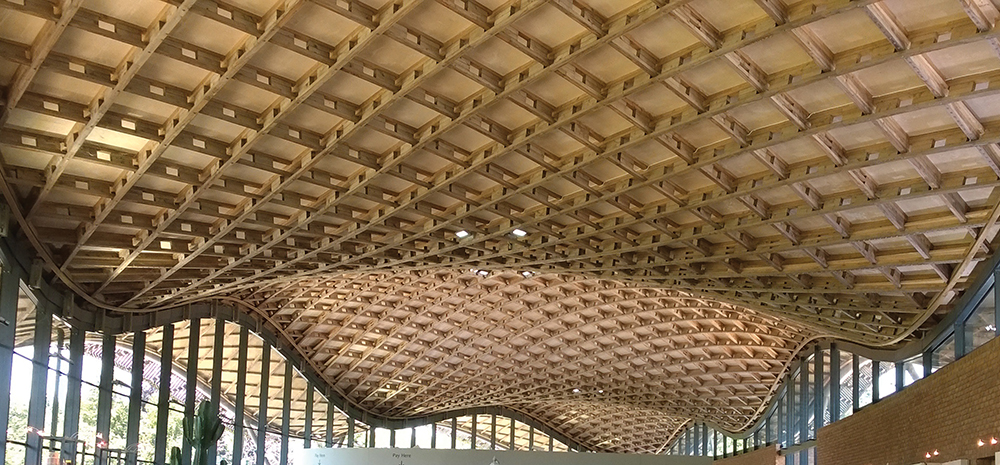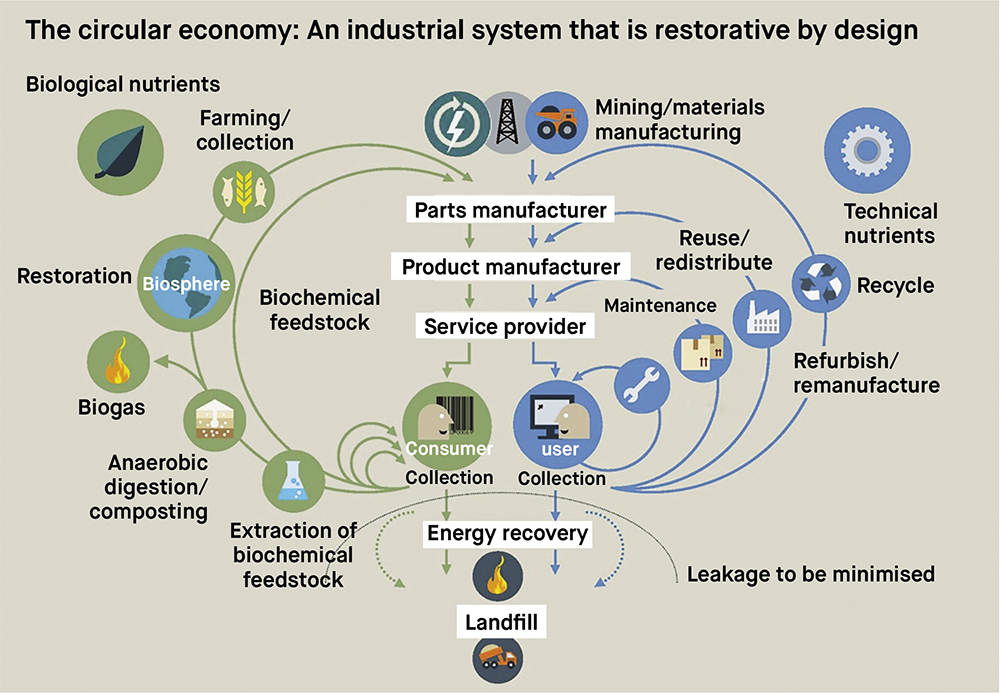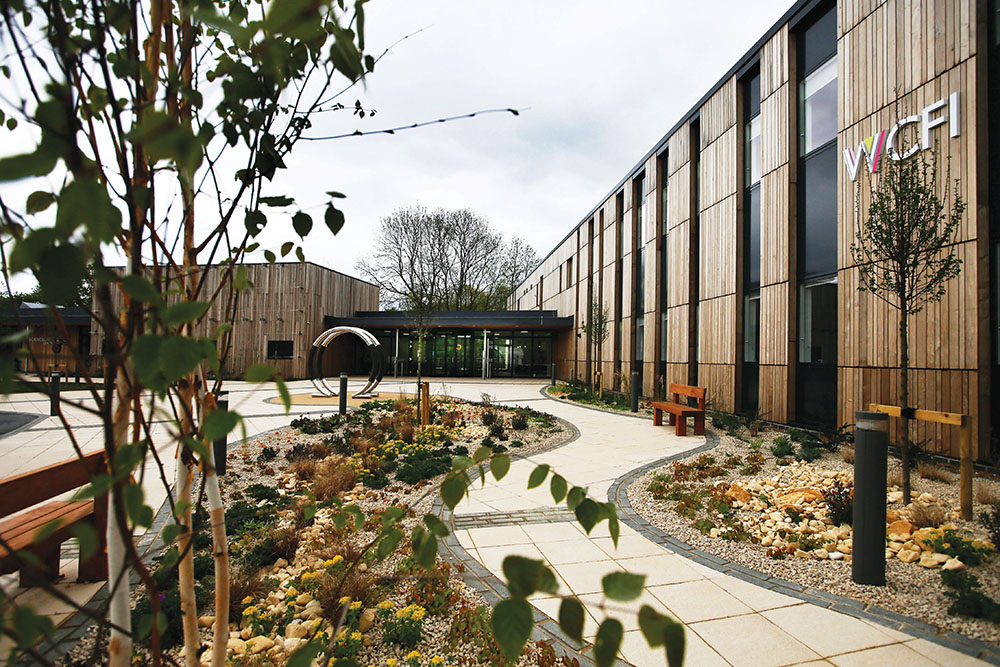
Timber is the ultimate renewable resource and has been used in construction for centuries, but where does it fit inside the circular economy? This CPD, in partnership with PEFC UK and Sustainable Construction Solutions, explains.
Traditionally, industry has followed the linear ‘take, make, dispose’ consumption model, where resources are taken from the earth to make whatever is needed with the products eventually disposed of at the end of their life. This model is not sustainable, so how do we meet the construction needs of the future and protect natural resources?
The circular economy is based on the principles of:
- designing out waste;
- keeping products and materials in use; and
- regenerating natural systems.
Over time, society has focused on efficiency and these core principles have been lost. However, in the latter part of the 20th century, society began to recognise the need to conserve natural resources. In 1981 Professor Walter Stahel’s Product-Life Factor was the first publication defining a ‘closed loop economy’ – now commonly referred to as the circular economy.
In the 1990s the establishment of the Forest Stewardship Council (FSC) and Programme for the Endorsement of Forest Certification (PEFC) forest certification and chain of custody schemes helped to ensure a sustainable supply of responsibly sourced wood-based material.

Professor Stahel’s work was expanded in 2002 by William McDonough and Michael Braungart, who developed the concept of cradle-to-cradle design in their book Cradle to Cradle: Rethinking the way we make things. This introduced the concept of biological and technical nutrient cycles.
Technical nutrients are generally sourced from finite resources extracted from the earth, such as metal ores or oil. To reduce the impact on these, the materials must be kept in circulation by ensuring they are maintained, reused, refurbished, remanufactured or, as a last resort, recycled.
Biological nutrients are generally sourced from renewable resources such as plants or algae and, prior to returning these resources to the biosphere, as much should be extracted from them as possible, with resources maintained through replanting.
Where does timber fit into this?
Timber is a biological nutrient and it would be assumed that it would follow the biological cycle. However, should timber components first follow the technical cycle?
The timber industry has been promoting what could be termed a semi-circular business model for years: timber and by-products from the processing industry are recycled into panel boards, or used as animal bedding and energy recovery. However, more could be done to reduce waste.
The TRADA Wood Information Sheet Recovering and Minimising Waste Wood (based on data from the Environment Agency and the Wood Recycling Association) found that, although less than 1% of ‘waste’ timber ends up in landfill, it is estimated that only 19% was recycled into other products, such as insulation or panel boards, with a further 11% used for animal bedding and surfaces. This leaves 69% that is directly or indirectly used as a biofuel for energy production.

With ever-increasing energy and resources going into timber production, in particular engineered timber products, designers should look at how these could be developed to follow the technical cycle initially and aim to:
- maintain timber products in place for longer, and refurbish and reuse shorter service-life timber components;
- look at how certain components could be remanufactured; and
- only allow timber products to enter the biological cycle with ‘cascading’ recycling once the above routes have been exhausted.
Timber and carbon dioxide
Trees remove CO2 from the atmosphere during their growing cycle and store this as biogenic carbon in the timber. For most timber, half the dry mass of the timber is biogenic carbon.
By planting trees and using the timber in construction, we are creating a long-term carbon capture and storage (CCS) solution. When the tree is felled and processed into timber products, the biogenic carbon – and therefore the sequestered CO2 – remains locked away in that timber (approximately 715kg CO2 per cu m of Swedish spruce).
When timber is reused or recycled into another timber product such as chipboard, the CO2 remains locked away, and will stay locked away until it is released through combustion or decomposition. We must therefore ensure we keep timber products in use for as long as possible, by adopting circular economy principles.
Source security
To ensure we continue to have sufficient timber to meet our long-term low-carbon construction needs, the UK must address the long-term security of its vital timber supplies.
The UK is second only to China as the largest net importer of timber and timber products, with more than 60% of the UK’s construction timber supply coming from overseas. Although we generally have stable supply chains from many countries around the world, recent pressures on supply show this may not be the case in the long term.

Every country is having to look at constructing lower embodied carbon buildings and, as timber is a key material in helping to achieve this, this could mean continuing restricted supplies into the future. There must be a sustainable homegrown timber supply for the future. As well as ensuring we plant more productive woodland, we must also ensure more is done with the existing resources.
For example, only 10% of the hardwood felled in the UK today is used for timber production, with much of the remaining 90% used for biomass without any previous use. And although the utilisation rates for softwood are significantly higher, over 500,000 cu m is used for single-use pallets to transport construction materials, demonstrating that this valuable resource is not being used as efficiently as it should be.
You must also ensure your timber is from a legal and sustainable source. Purchases should be in accordance with the guidance on the UK government’s Central Point of Expertise on Timber (CPET). The easiest way to do this is to ensure timber is delivered to site with full chain of custody certification from one of the three main certification schemes:
- Programme for the Endorsement of Forest Certification (PEFC) Forest Stewardship Council (FSC)
- Grown in Britain (GiB).
For more information on responsible sourcing see our Sourcing Timber Responsibly CPD (https://tinyurl.com/4cspumv4).
Designing for resource efficiency
Utilising the existing structure and finishes, through refurbishment or adaptation, is the best way to ensure material efficiency. Timber components that can be reused should be identified in the pre-redevelopment audit of any existing structure. However where new materials are brought to site, they should be used in the most efficient way.
Doing ‘more with less’ means finding new engineering solutions. Examples include the Edinburgh Napier University research project which assessed how cross-laminated timber (CLT) panels could be produced from lower strength grade C16 British timber.
Another example is the use of small section oak and larch to form the gridshell roof structure of the Savill Building in Windsor Great Park, all of which was harvested from trees within the grounds of the Crown Estate.
Future innovations are likely to include the use of 3D-printed components manufactured from wood-fibre bio-composites, particularly for spare parts.
Designing for optimal service life
Designing for optimal service life means ensuring products last for the desired service life of the element. This may mean designing the product to be maintained in place for longer (eg external cladding) or ensuring it can have multiple reuses, possibly following refurbishment or remanufacture (eg flooring). The diagram below shows what we believe we should be aiming for on the service life of typical building components.

Traditionally, to make timber last longer, durable species have been sourced from the UK and overseas, or non-durable softwood species have been chemically treated with hazardous heavy metals, limiting their reuse. However, alternative ‘modification’ techniques including thermal modification (eg Brimstone or Thermowood) and chemical modification, such as furfurylation (eg Kebony) or acetylation (eg Accoya), provide a non-hazardous alternative. These processes change the physical structure of the wood meaning fungi and bacteria do not feed on them.
Non-durable hardwood and softwood species can be converted into class 1 or 2 durability products, with some warranted to last at least 50 years in external above-ground applications, so with good detailing our 60-year requirement for
cladding is possible.
For structural building elements, other alternatives to treatment may need to be used. Good detailing and construction methods during the build are essential in ensuring timber does not absorb too much moisture before the structure is watertight, and also to allow the escape of any moisture that is taken on.
Designing for flexibility, deconstruction and disassembly
For structures to remain relevant, they must be flexible enough to be reconfigured to suit the current user’s needs. This could include the incorporation of float-out wall panels that can open up or close down spaces within a building. It could also mean the incorporation of access panels to provide access for maintenance.
At end of life, all components of the building need to allow for deconstruction and disassembly to enable refurbishment and reuse. This could include quick release connections, such as Sherpa connections for structural timbers, which can be lifted off, or the use of innovative joints, such as the Kährs Woodloc 5S system, which allows the flooring to be dismantled.
Business models
To facilitate the take-up of these options, changes in business models will be required. Where components are to be recovered for reuse, refurbishment or remanufacture, it would be beneficial if the ownership remained with the component supplier. This allows them to control any required maintenance to ensure it remains in use for the required service life, and also the recovery of the component at the end of life.
“Although less than 1% of ‘waste’ timber ends up in landfill, it is estimated that only 19% was recycled into other products, such as insulation or panel boards.”
There are various business models that could be used for timber products, and the one used would depend on the intended service life and the level of maintenance required. Possible business models could include short-term hire, longer-term leasing, service contracts or incentivised return.
For example, a removable wood flooring system could be provided on a service contract over a defined period, with the manufacturer also providing a cleaning and maintenance service throughout this period. When the service contract is completed, the flooring could be removed, refurbished as required, and leased out on a service contract to another client.
Another example could be the long-term lease of a component that needs little or no servicing, such as a partition wall system. The wall system would need to be flexible enough to be used in various locations, where the nominal floor-to-ceiling height was within a defined tolerance. The manufacturer could then control its installation and removal, and any subsequent refurbishment or remanufacture before being leased to another client.
This article has been created by Construction Manager in partnership with Sustainable Construction Solutions and Programme for the Endorsement of Forest Certification

CPD Module Content
Information in this CPD was correct at the date of publication.


